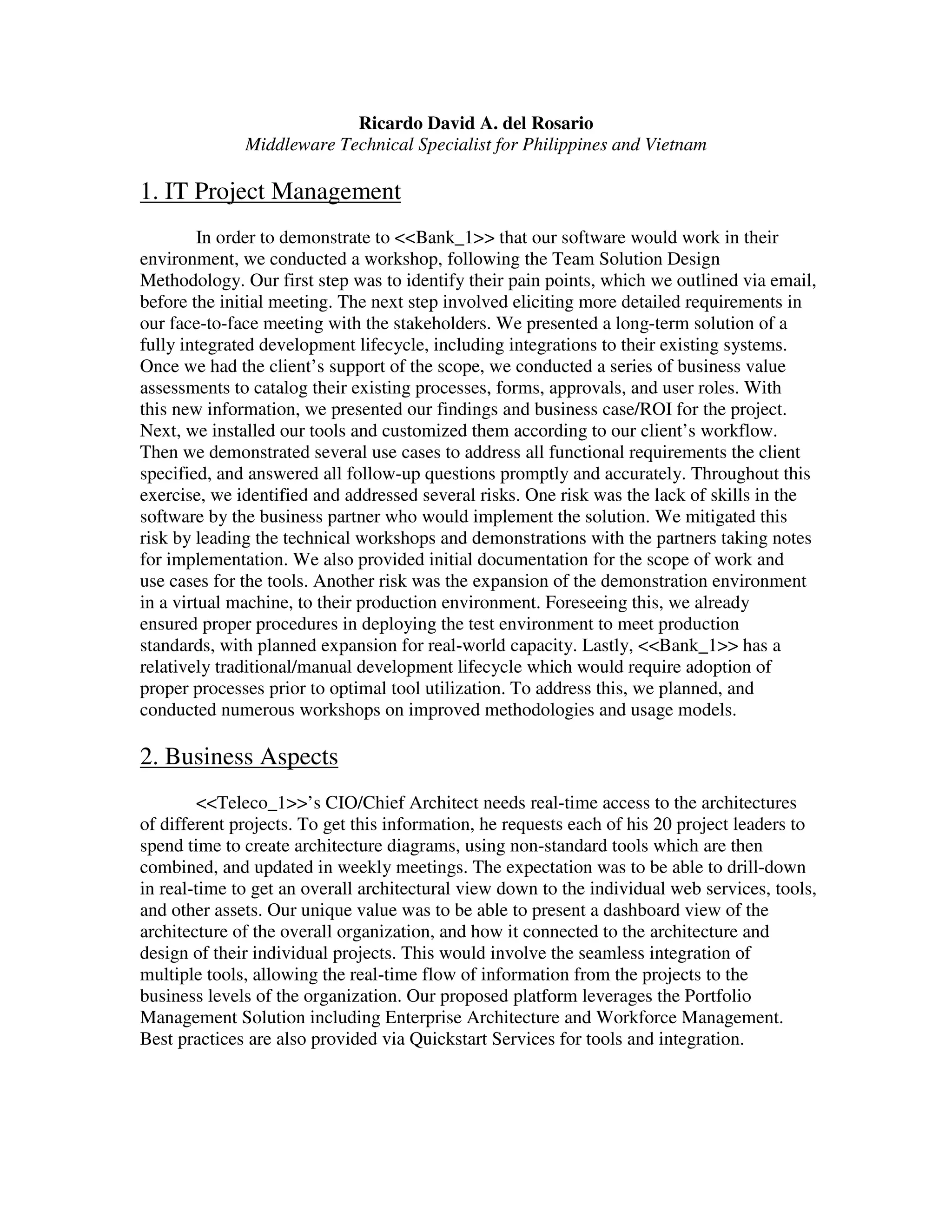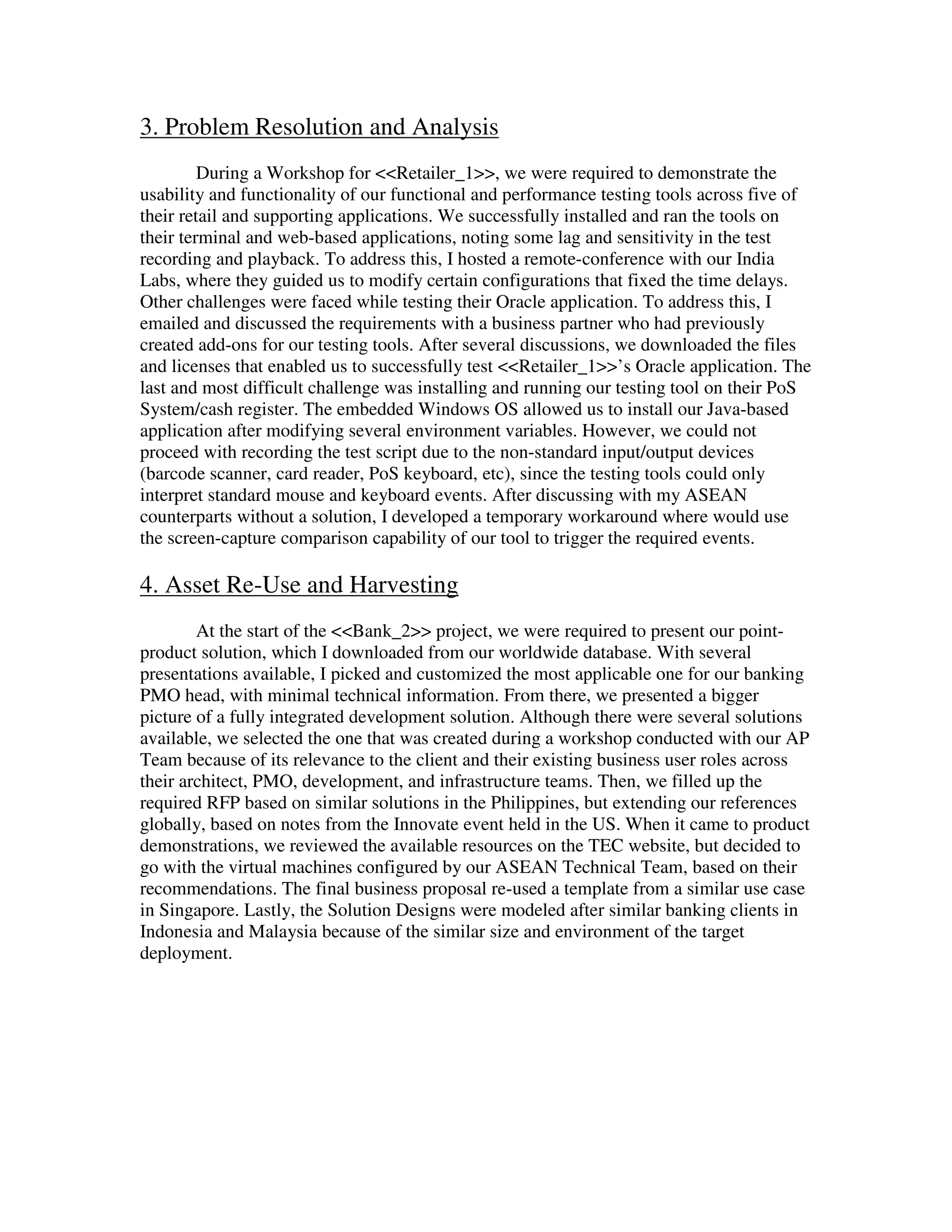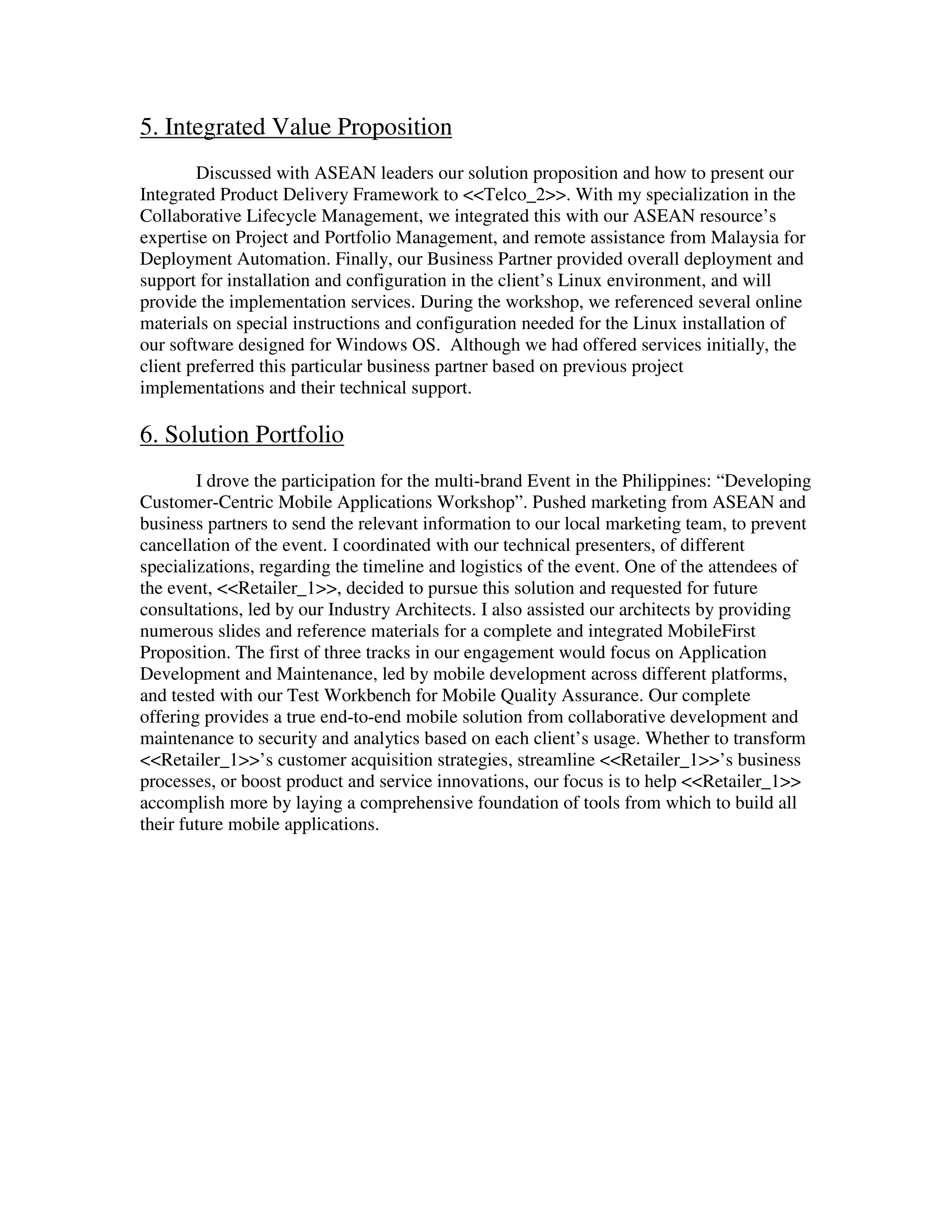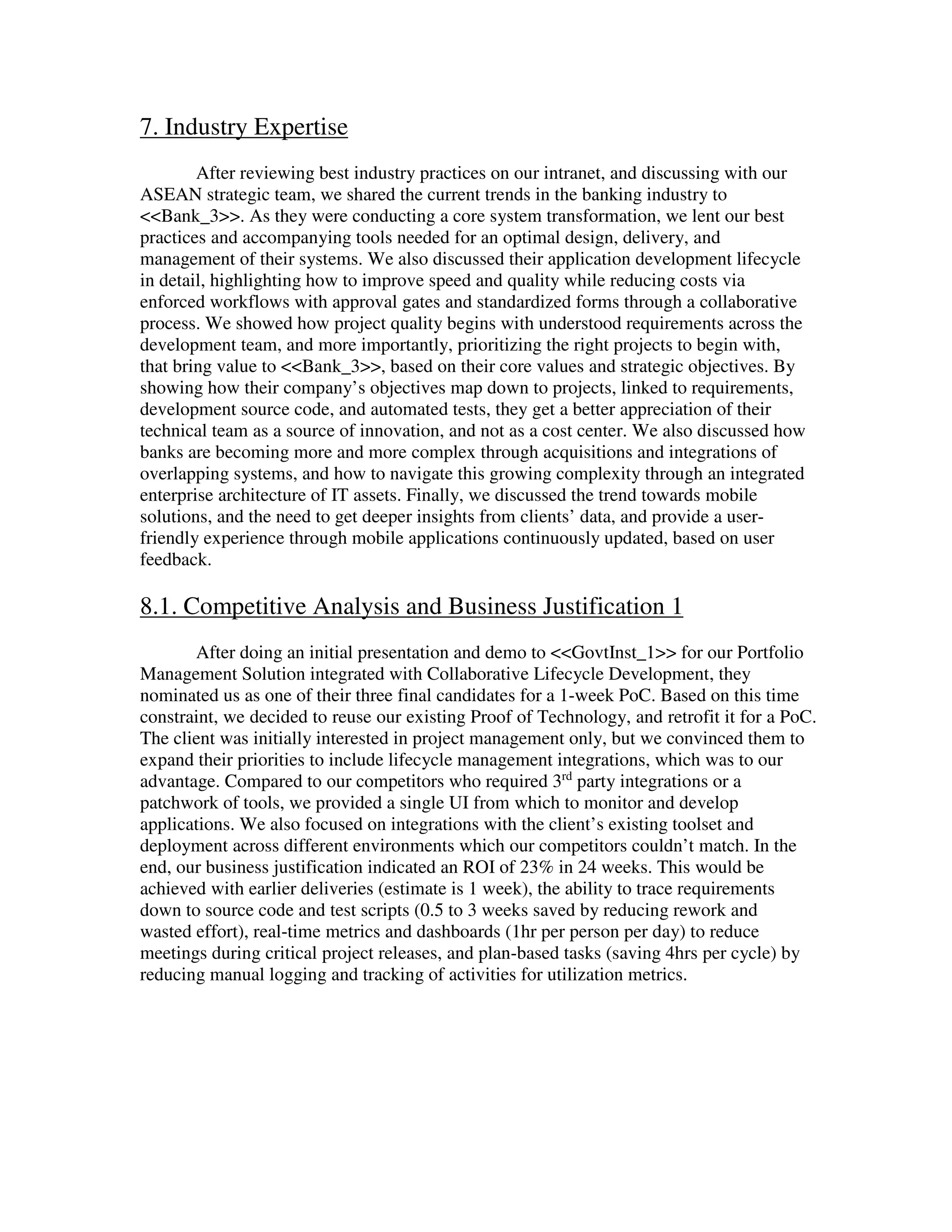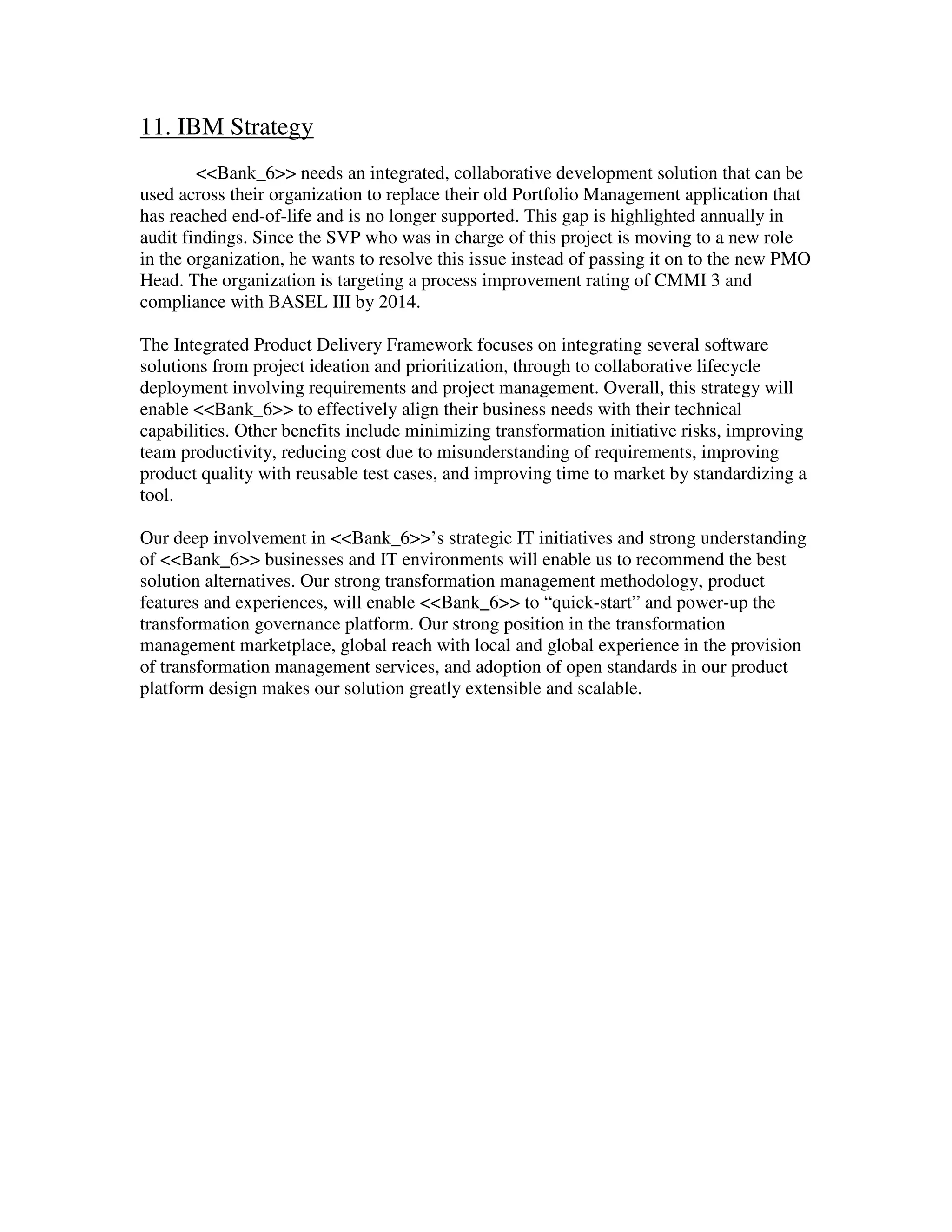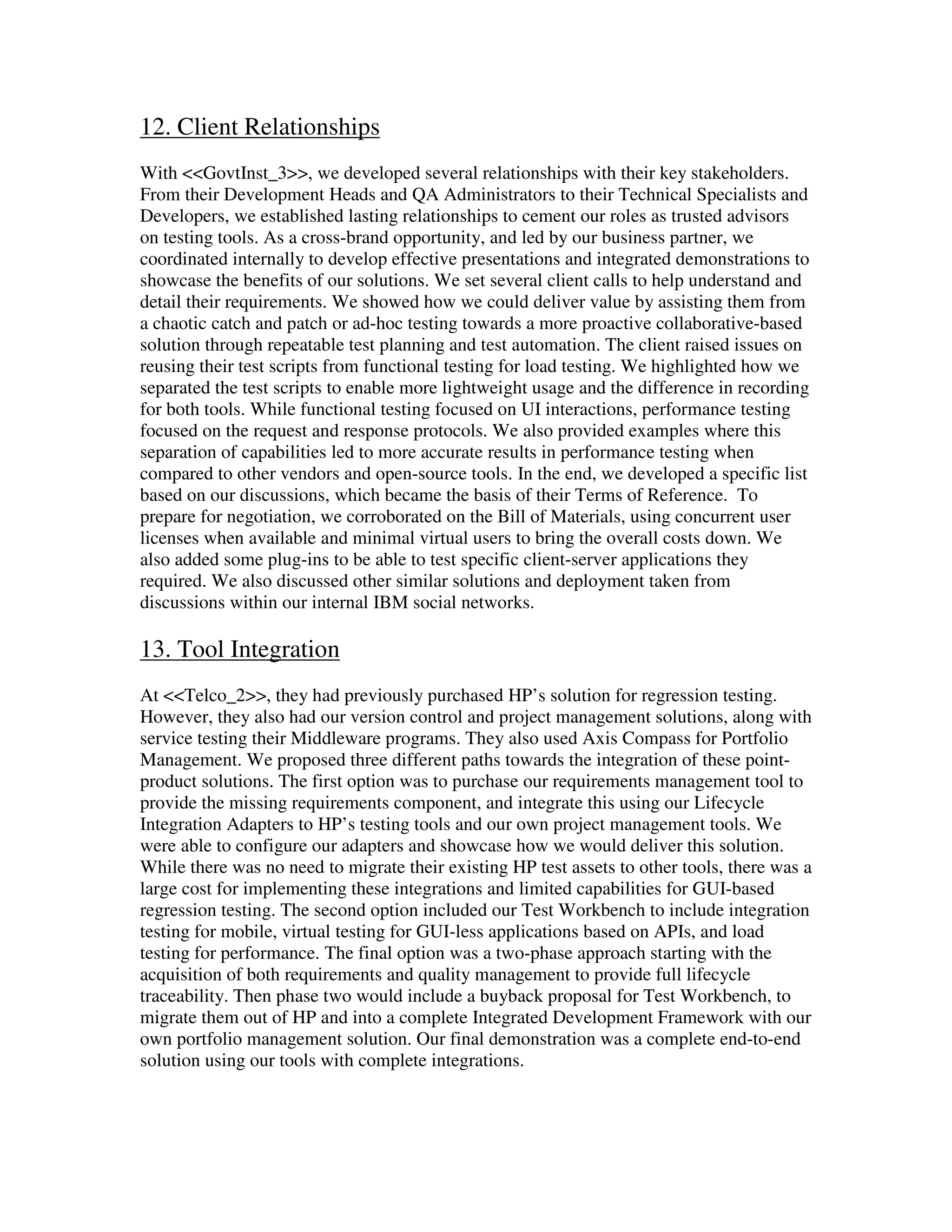Ricardo David A. del Rosario is a middleware technical specialist who has worked on several IT projects for banks, telecommunications companies, and government institutions in the Philippines and Vietnam. He has experience with project management, business analysis, problem resolution, asset reuse, industry expertise, competitive analysis, technical evaluations, and maintaining client relationships. For each project, he works to understand the client's needs, customize solutions from IBM's portfolio, address any technical issues, and justify the business value of IBM's integrated products and services.
